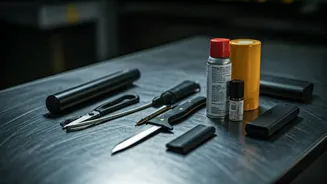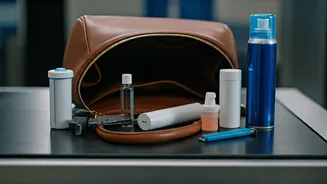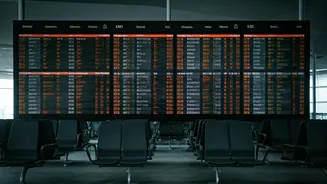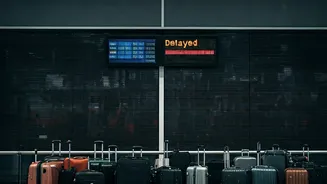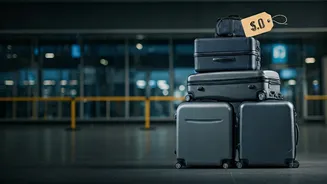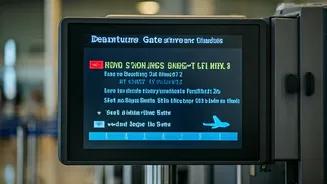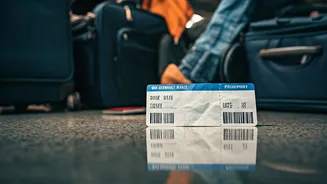Sharp Objects
Knives, scissors (even small ones), and box cutters are usually not allowed in the cabin. These items pose a threat if misused. While some scissors with
rounded tips and blades shorter than 6cm might be allowed, it's wise to pack any sharp objects in checked luggage to avoid any potential confiscation or delays. The regulations are in place to prioritize the safety of all passengers and crew during the flight. Always err on the side of caution when deciding what to carry in your carry-on.
Certain Liquids
The TSA's 3-1-1 rule is crucial for liquids. Passengers are permitted to carry liquids, gels, aerosols, creams, and pastes in containers of 3.4 ounces (100 milliliters) or less. These containers must fit comfortably in a single, clear, quart-sized plastic bag, with only one bag allowed per passenger. This includes toiletries like shampoo, conditioner, and toothpaste. Larger quantities must be packed in checked baggage. This rule helps security personnel easily screen for potential threats and ensures the safety of all onboard the aircraft, preventing any possible incidents due to liquid-based explosives.
Flammable Items
Anything that can ignite easily is a no-go for carry-ons. This covers items such as lighter fluid, matches, fireworks, and certain types of aerosols. These materials are inherently dangerous due to their volatility and risk of combustion. Because of the enclosed environment of the aircraft cabin, any uncontrolled fire could quickly spread. Always be mindful of the potential hazards and keep these flammable items stored securely in checked luggage, or better yet, leave them at home. Your safety and the safety of your fellow passengers are the top priority.
Weapons of Any Kind
This one is fairly obvious: guns, ammunition, and anything that can be used as a weapon are not allowed in carry-on luggage. This includes realistic-looking toy guns and even replicas. While some firearms may be allowed in checked baggage under specific conditions and with proper declaration, they are strictly prohibited in the cabin. The goal here is to keep the aircraft safe from any potential harm. This rule applies to any item that could potentially threaten the safety of others or be used to disrupt the flight.
Batteries and Power Banks
While many batteries are allowed, there are restrictions to be aware of. Lithium-ion batteries used in electronic devices like laptops, phones, and tablets are generally permitted in carry-on baggage, provided they are for personal use. However, spare lithium batteries must be kept in your carry-on luggage and protected to prevent short circuits. Power banks are included in this category as well, and they usually come with restrictions based on their power capacity. Damaged or recalled batteries are a significant fire hazard, and the regulations exist to mitigate any risks.
Sporting Equipment
Items that could be used as weapons, such as baseball bats, golf clubs, and hockey sticks, are typically not permitted in the cabin. While they might be innocent in nature, these items could be used to cause harm. Depending on the airline and the specific item, it is generally recommended to pack these in checked baggage to avoid any issues or confiscation at security checkpoints. This ensures that the flight environment remains safe and controlled for all passengers, minimizing the risks associated with such equipment.
Tools and Hardware
Tools like hammers, wrenches, and screwdrivers, even small ones, can be restricted. These items are often prohibited or require special handling, as they could potentially be used to cause harm or interfere with the flight operations. Any tool that could be weaponized or used to damage the aircraft is generally a no-go. For most of these, it is advisable to put them in your checked luggage to prevent any potential delays or confiscations at the security checkpoint. Prioritizing safety is the key principle behind these regulations.
Certain Food Items
Some foods can also be problematic. While snacks are generally allowed, certain items, especially those that are spreadable like peanut butter, might be subject to the 3-1-1 rule if they are in containers larger than 3.4 ounces. Additionally, items with strong odors could be a source of discomfort for other passengers. Consider packing pre-packaged foods or snacks that meet the guidelines and won't cause any issues. Always check the specific airline's and destination country's regulations, as some foods may be restricted due to agricultural or health concerns.
